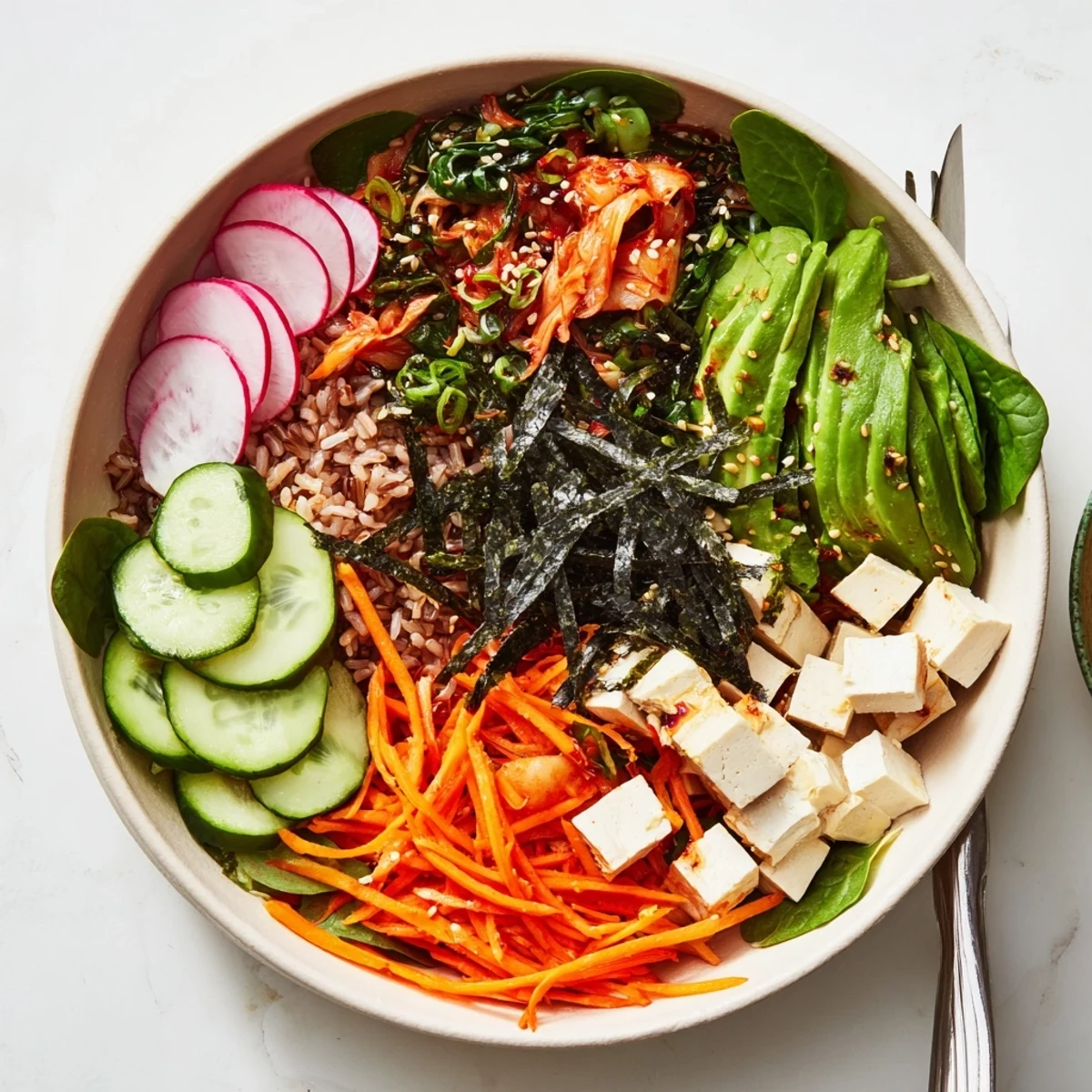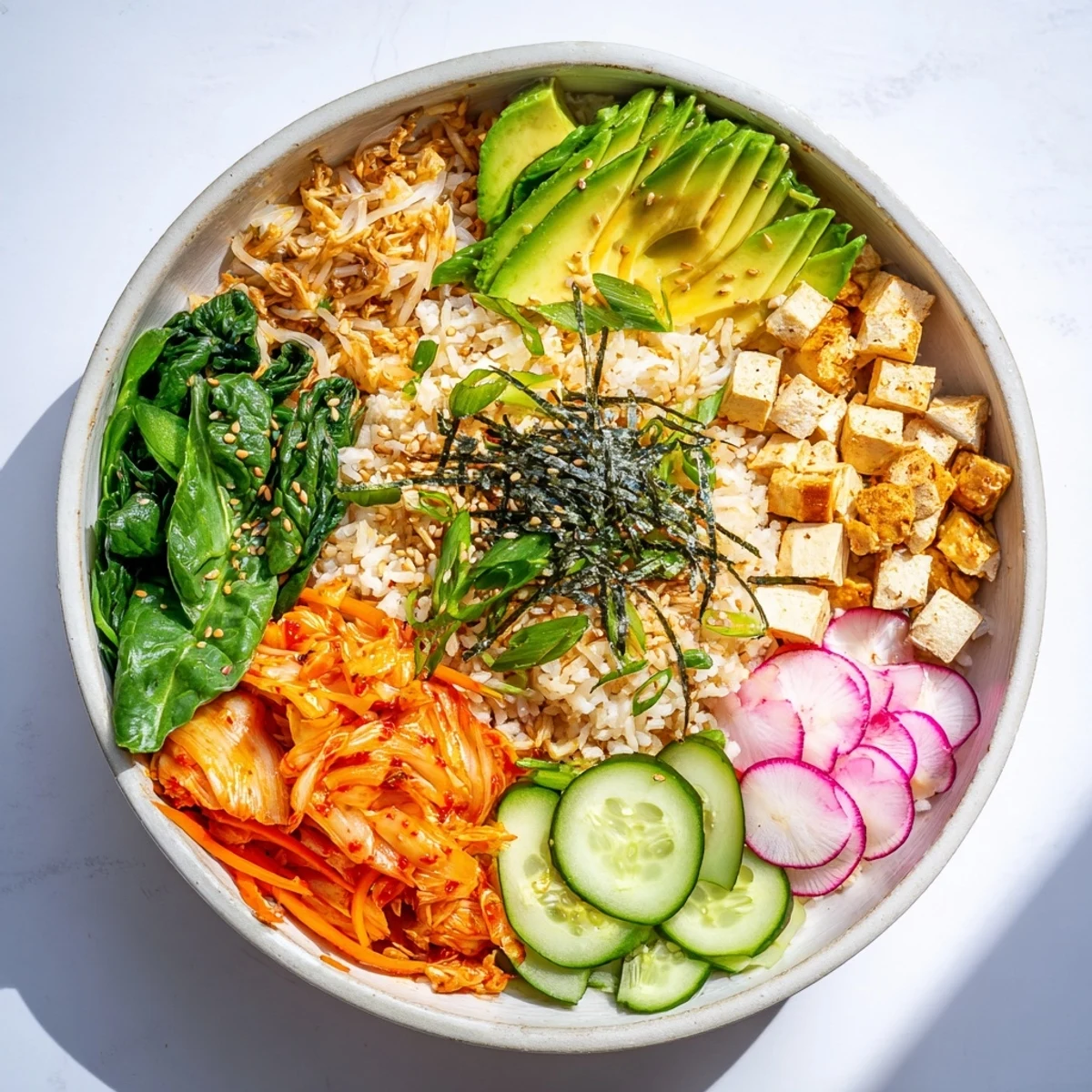 Save
Save A vibrant, nourishing bowl featuring tangy kimchi, fresh seasonal vegetables, hearty grains, and a flavorful dressing, perfect for a wholesome lunch or dinner.
I first made this bowl on a busy weeknight when I was craving something comforting and nourishing. The combination of crispy veggies and tangy kimchi instantly became a family favorite.
Ingredients
- Grains: 1 cup (180 g) brown rice or quinoa, uncooked, 2 cups (480 ml) water, 1/2 tsp salt
- Fermented Vegetables: 1 cup (150 g) kimchi, chopped (ensure vegetarian if needed), 1/2 cup (75 g) sauerkraut (optional, for variety)
- Fresh Vegetables: 1 cup (100 g) shredded carrots, 1 cup (80 g) cucumber, sliced, 1 cup (60 g) baby spinach or mixed greens, 1 avocado, sliced, 2 radishes, thinly sliced, 1/4 cup (15 g) scallions, sliced
- Protein (optional, for added nutrition): 1 cup (160 g) cooked edamame or firm tofu, cubed
- Dressing: 2 tbsp soy sauce or tamari, 1 tbsp toasted sesame oil, 1 tbsp rice vinegar, 1 tsp maple syrup or honey, 1 tsp grated fresh ginger, 1 small garlic clove, minced
- Toppings: 1 tbsp toasted sesame seeds, 1 sheet nori, sliced (optional), chili flakes (optional)
Instructions
- Cook Grains:
- Rinse the grains and cook them with water and salt according to package instructions (about 25 minutes for brown rice, 15 minutes for quinoa). Once cooked, fluff with a fork and let cool slightly.
- Prep Vegetables:
- Prepare all fresh vegetables: shred carrots, slice cucumber, avocado, radishes, and scallions.
- Prepare Protein:
- If using tofu, pat dry and cube. Optionally, pan-sear the tofu in a nonstick pan over medium heat with a splash of oil until golden on all sides.
- Make Dressing:
- In a small bowl, whisk together the soy sauce, sesame oil, rice vinegar, maple syrup, ginger, and garlic to make the dressing.
- Assemble Bowls:
- To assemble, divide the cooked grains among four bowls. Arrange kimchi, sauerkraut (if using), fresh vegetables, and protein on top of the grains.
- Add Dressing & Toppings:
- Drizzle each bowl with the dressing. Garnish with sesame seeds, nori, and chili flakes if desired.
- Serve:
- Serve immediately and enjoy.
 Save
Save This dish always brings everyone to the table, and my kids love choosing their toppings. It's a fun way for us to enjoy different flavors together.
Required Tools
Medium saucepan for cooking grains, mixing bowls for prepping components, a chefs knife, a cutting board, and a whisk for the dressing.
Allergen Information
This bowl contains soy and sesame. Kimchi may include fish sauce or shellfish so always check labels for vegan options. Tamari is gluten-free for those with sensitivities.
Nutritional Information
Per serving: 350 calories, 10 g total fat, 54 g carbohydrates, 11 g protein.
 Save
Save Serve your fermented vegetable bowl fresh for the best flavor. Leftovers are perfect for lunch the next day!
Recipe FAQ Section
- → What grains work best in the bowl?
Brown rice and quinoa are recommended for their texture and nutrition, but farro, barley, or cauliflower rice also make great bases.
- → Can I make it fully vegan?
Yes. Use maple syrup in the dressing and ensure the kimchi is free of fish sauce or other animal products.
- → What can I use for protein besides tofu or edamame?
For a non-vegetarian option, add grilled chicken or a soft-boiled egg. Chickpeas are another plant-based alternative.
- → Can I prepare the vegetables ahead of time?
Yes, most fresh vegetables can be sliced a few hours in advance and stored in the fridge for quick assembly.
- → Is this dish suitable for gluten-free diets?
Use tamari instead of soy sauce and choose grains like rice or quinoa for a gluten-free version, but check all labels for allergens.
- → What dressing pairs best with tangy kimchi?
A sesame-based dressing with soy sauce, rice vinegar, maple syrup, ginger, and garlic beautifully complements the kimchi's tang.